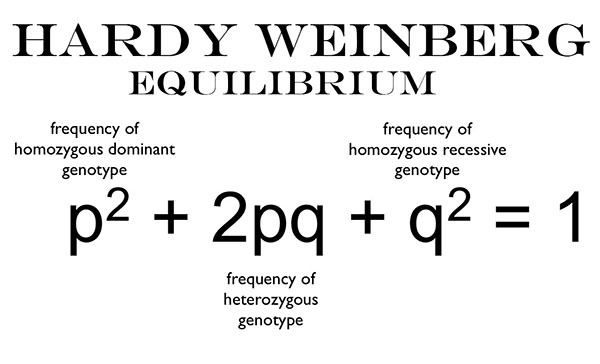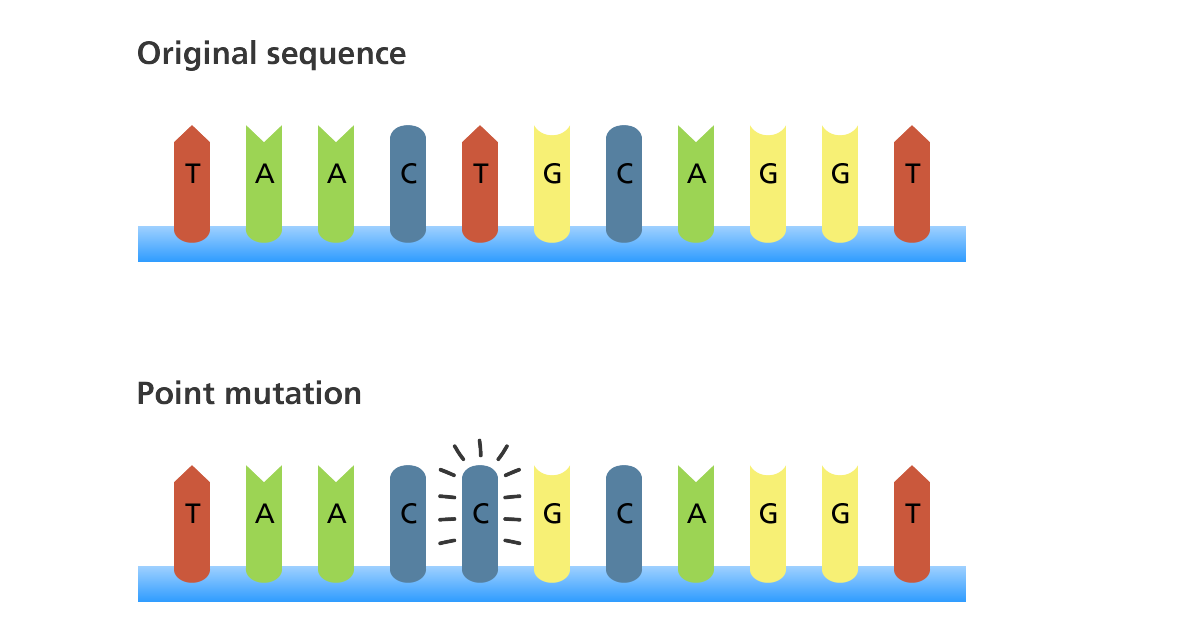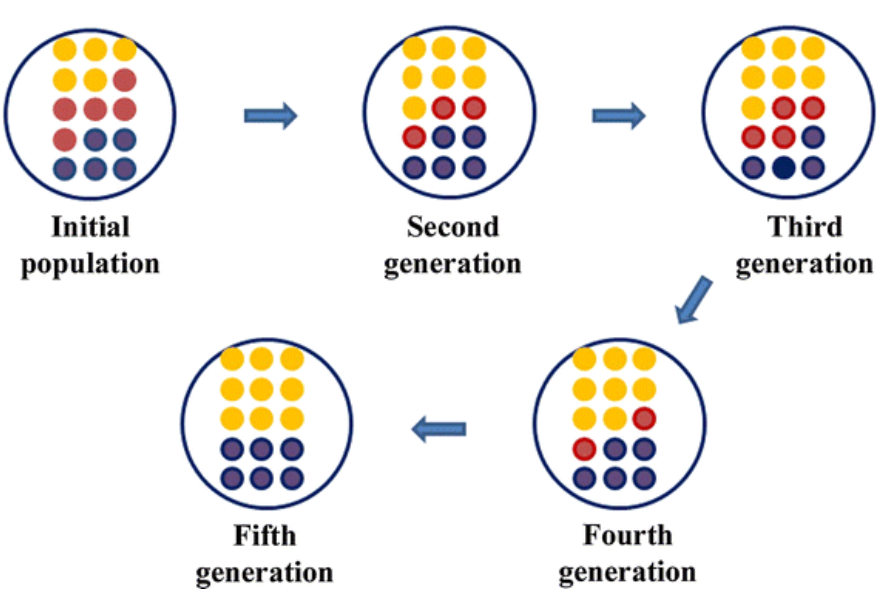Population Genetics Study Guide
Introduction:
Population genetics can be defined as the genetic composition of populations. Rather than focusing on gene segregation within a cross or family, population genetics can be thought of as an extension of Mendelian genetics to the population level. So, let’s learn about population genetics in detail.
Understanding population genetics:
- While a solitary diploid individual will have only two alleles for any given gene, a population may include multiple alleles with varying frequencies.
- The frequencies of different genotypes and alleles in populations might well be characterized in population genetics, and the degrees of genetic diversity can be estimated.
- A population is a collection of creatures belonging to the same species that interact in some way. As a result, most species are split into many populations.
Factors affecting genetic makeup change
Gene frequency:
The proportion of distinct alleles of a gene in a random mating population is known as gene frequency. In other words, the proportion of each type of allele at a particular site in a random mating population is known as gene frequency. They are used to determine the genetic makeup of a population.
Genotype frequency:
It is the ratio of different genotypes in a Mendelian population. Genomic frequency is also known as zygotic frequency. The three approaches discussed above are also used to estimate the genotypic frequency.
Hardy-Weinberg law:
This principle states:
- If there is no selection, mutation, migration, or random genetic drift, the frequency of genes and genotypes in a random mating population remains constant generation after generation. They also came up with a method to describe the allele-allele balance mathematically.
- For a single location with two alleles (A and a), the frequencies of three genotypes are P2 (AA): 2Pq (Aa): q2 (aa), where P and q are the frequencies of allele A and ‘a’, respectively. The sum of P and q is always one.
Random occurrences in evolution
Effects of random mating:
Factors affecting gene frequency:
- All genotypes have the same chance of surviving in random mating, and evolutionary factors like selection, mutation, and random genetic drift are absent.
- If these assumptions are not met, the gene and genotype frequencies in a population will change.
Genetic polymorphism:
The existence of diverse phenotypes in a genetic population on a routine basis is known as genetic polymorphism. This is frequently preserved mainly due to the superiority of heterozygotes over both homozygotes. It is called balanced polymorphism when polymorphism is sustained due to heterozygote advantage.
Mutation:
A mutation is an abrupt heritable change in an organism’s traits is referred to as a mutation. They are distinguished from segregants by their extremely low frequency. Gene mutations are the primary source of novel alleles and, as a result, genetic diversity provides phenotypes on which natural selection acts.
Gene flow:
Gene flow, also known as gene migration, is the transfer of genetic material from one population of a species to another through interbreeding, changing the makeup of the recipient population’s gene pool. The transfer of new alleles thru gene flow enhances population diversity and allows for new trait combinations.
Genetic drift:
Genetic drift” is a mechanism of evolution and refers to random fluctuations in the numbers of gene variants in a population. This change takes place strictly by chance. It mostly affects small populations where it can cause alleles/ traits to be dominant or disappear entirely from a population. It thus decreases the genetic diversity of a population.
Bottleneck effect and Founder effect are the 2 basic types of genetic drift:
→ Bottleneck effect:
The bottleneck effect is an extreme case of genetic drift that occurs when a population’s size is drastically decreased. Natural calamities (earthquakes, floods, and fires) can annihilate a population, killing the majority of the population, and leaving just a few scattered groups of survivors.
→ Founders effect:
Another extreme example of drift is the founder effect, which happens when a small number of individuals split from a bigger population to form a colony. The new colony is separated from the native population, and the founding members may not reflect the original population’s complete genetic diversity.
For example, alleles in the founder population may have different frequencies than those in the original population, and perhaps some alleles may be completely absent. The founder effect is similar to the bottleneck effect in principle, but it happens differently. For example, colonization rather than a catastrophe.
Significance of population genetics:
- Plant breeders can utilize gene and genotype frequency in a population to assess the competitive capacity of different genotypes in varietal combinations. Such research aids in the discovery of genotypes with high adaptive value.
- The relevance of many elements in natural evolution may also be shown by studying gene frequency in a population. The Hardy-Weinberg concept generates composite and synthetic varieties in cross-pollinated crops.
Conclusion:
- Population genetics is the study of the frequency of genes and genotypes in a Mendelian population. To put it another way, it’s a field of genetics that studies the frequency of genes and genotypes as per Mendelian genetics.
- A population is a group of organisms of a single species whose members interact with one another in some way. As a result, a species is usually divided into several populations.
- The proportion of distinct alleles of a gene in a random mating population is referred to as gene frequency.
- In a Mendelian population, it refers to the ratio of distinct genotypes. Zygotic frequency is another term for genotypic frequency.
FAQs:
1. What are the main types of population genetics?Mendelian (restricted to qualities with a discontinuous distribution in the population, such as blood types) and quantitative (in which it is difficult to categorize people into distinct classes, such as quantifiable attributes) population genetics methods can be divided into two categories (height, weight, etc.).
2. What is the main purpose of population genetics?
Population genetics aims to determine how and why allele and genotype frequencies fluctuate within and between populations. The branch of biology gives us the most in-depth and comprehensive understanding of how evolution works.
3. How do you calculate population genetics?
It is calculated by dividing the number of copies of the gene by the number of times the allele appears in the population. A population’s gene pool comprises and copies all the genes in that population.
4. What is population genetics, and how does it relate to evolution?
The study of genetic diversity within and among populations and the evolutionary causes that explain this variation is known as population genetics. It is based on the Hardy-Weinberg rule, which is true as long as the population is large, mating is random, and mutation, selection, and migration are minimal.
5. What is population genetics in anthropology?
Human population genetics is concerned with forecasting how the distribution of genes and genotype frequency in a population will evolve. Alleles are two or more different gene variants that occur due to a mutation.
6. How is population genetics relevant to human health?
In addition to clinical and epidemiological genetic studies, population genetics provides an alternative approach for identifying disease risk alleles/genes, categorizing their attributes, and awareness of the relative impact of human genetic variation on rare, serious disorders and complex diseases phenotypes.
We hope you enjoyed studying this lesson and learned something cool about Population Genetics! Join our Discord community to get any questions you may have answered and to engage with other students just like you! Don’t forget to download our App to experience our fun, VR classrooms – we promise, it makes studying much more fun! 😎
Sources:
- Population genetics. https://www.britannica.com/science/population-genetics. Accessed 20 Dec, 2021.
- Population Genetics. https://plato.stanford.edu/entries/population-genetics/. Accessed 20 Dec, 2021.
- Polygenic Adaptation: Integrating Population Genetics and Gene Regulatory Networks. https://www.sciencedirect.com/topics/neuroscience/population-genetics. Accessed 20 Dec, 2021.
- Population genetics. https://le.ac.uk/vgec/topics/population-genetics. Accessed 20 Dec, 2021.
- Population genetics. https://flexbooks.ck12.org/cbook/ck-12-biology-flexbook-2.0/section/5.18/primary/lesson/population-genetics-bio/. Accessed 20 Dec, 2021.




